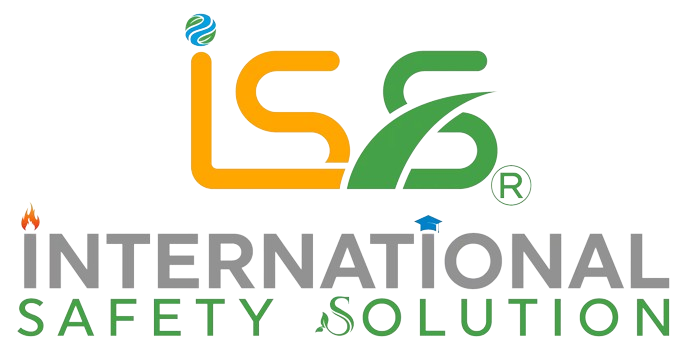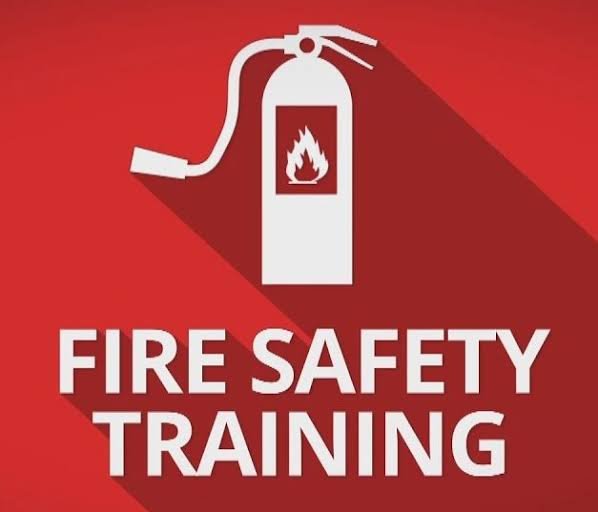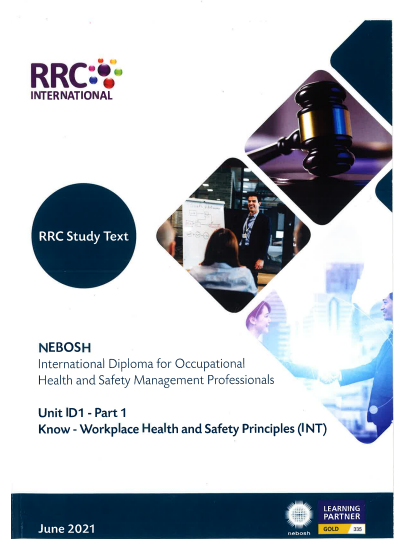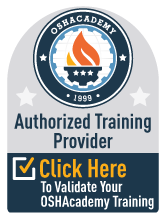Introduction to NEBOSH IG1 Open Book Examination (2025 Edition)
The NEBOSH International General Certificate (IGC) is one of the world’s most trusted qualifications in Occupational Health and Safety (OHS). It provides essential knowledge for safety professionals, supervisors, and managers who want to make workplaces safer and more compliant.
The IG1 unit, Management of Health and Safety, forms the theoretical foundation of the qualification. It teaches how to develop policies, lead safety culture, identify hazards, and manage risk effectively.
Why the Open Book Exam (OBE) format was introduced
NEBOSH replaced the closed-book exam with the Open Book Examination in 2020 to assess how well learners can apply safety knowledge to real-life workplace scenarios. The OBE encourages critical thinking, evidence-based reasoning, and practical application rather than memorization.
⚠️ Disclaimer:
This blog is an AI-generated sample based on the NEBOSH IG1-0055 (2025) paper. It is not an original NEBOSH document but a learning guide to help students understand structure, tone, and approach.
Understanding the NEBOSH IG1 Paper Format and Marking Structure
Each IG1 OBE paper is scenario-based and includes eight main tasks linked to NEBOSH learning outcomes.
Structure and Marking
- Format: Online written assessment (Open Book)
- Duration: 24 hours
- Word Count: 2,500–3,000 words (recommended)
- Pass Mark: 45% (Pass), 65% (Credit), 75% (Distinction)
- Reference Standards: HSE, ILO-OSH 2001, ISO 45001
What Examiners Look For
NEBOSH markers focus on:
- Clear application of theory to the given scenario
- Logical structure and evidence-based reasoning
- Use of correct command words (Identify, Outline, Explain, Evaluate)
- Professional tone and consistent referencing to recognized standards
3️⃣ NEBOSH IG1 Recent Paper Overview (AI Sample: IG1-0055)
The AI sample paper revolves around a university library lift maintenance incident involving a contractor (Liftex) and the Facilities Manager (FM). The event exposed weaknesses in safety supervision, communication, and emergency preparedness.
Key Themes
- Contractor management and supervision
- Shared workplace responsibilities
- Permit-to-work system weaknesses
- Emergency response and investigation
- Benefits of inspections and collaboration
Facts & Figures
- The job was scheduled for four hours but poorly monitored.
- A 20-minute response delay occurred during the emergency.
- Inadequate supervision and missing documentation contributed to system failure.
This case reflects common workplace issues—ideal for testing how candidates apply NEBOSH principles.
🧰 Task 1 – Contractor Management (Safe Work Systems)
The FM correctly selected a competent lift maintenance contractor and issued a permit-to-work (PTW) before maintenance. However, supervision was lacking after the permit was issued.
Mistakes in Scenario:
- No follow-up checks or permit closure
- Apprentice allowed without induction
- Failure to verify safe completion
Learning Point:
Contractor management includes planning, communication, supervision, and review.
Reference: HSE “Managing Contractors” and ILO-OSH 2001 – Coordination of Activities.
🤝 Task 2 – Collaboration in Shared Workplaces
The university shared its building with tenant businesses. Poor communication caused confusion over safety duties.
Recommendations:
- Conduct joint safety meetings and shared risk assessments
- Simplify rental contracts with clear HSE clauses
- Hold combined emergency drills
Key Message:
Effective coordination ensures shared accountability. Cooperation between employers is essential under HSE Managing Contractors in Shared Premises.
🧍♂️ Task 3 – Importance of Worker Involvement in Risk Assessment
Engaging workers and tenants in risk assessments improves accuracy and ownership.
Benefits:
- Workers share practical insight into hazards
- Promotes transparency and trust
- Increases compliance with control measures
Standards Reference: ILO-OSH 2001 and NEBOSH IGC Element 3 emphasize active participation for sustainable safety culture.
🧑💼 Task 4 – Effective Health and Safety Committees
The university committee was large and unproductive.
Improvements:
- Keep membership concise for focus
- Set clear agendas and deadlines
- Record and follow up on previous actions
- Encourage senior leadership attendance
Learning Point:
A well-structured committee strengthens communication and drives continual improvement (Plan-Do-Check-Act model).
🧾 Task 5 – Permit-to-Work (PTW) System Evaluation
The PTW process existed but was poorly managed.
Strengths:
- Proper authorization and hazard discussion
- Job duration clearly defined
Weaknesses:
- No supervision during work
- Permit left open after completion
- No documentation of closure
Key Lesson:
A PTW must include authorization, monitoring, and closure verification.
Reference: HSE Safe Work Systems – Permit-to-Work Guidance.
🚨 Task 6 – Emergency Management and Preparedness
During the incident, passengers were trapped in the lift.
Positives:
- Alarm system functioned correctly
- First aiders responded quickly
Negatives:
- 20-minute delay by FM
- No disabled evacuation plan
- Lack of post-incident communication
Learning Point:
Effective emergency management demands training, planning, and coordination.
HSE recommends regular drills and written procedures for all foreseeable emergencies.
🔍 Task 7 – Incident Investigation Process
The Health and Safety Director (HSD) led a structured investigation.
Steps Taken:
- Secured the area and gathered evidence
- Interviewed staff and reviewed records
- Identified immediate and root causes
- Suggested improvements to PTW and maintenance schedules
Key Message:
Investigations should focus on learning, not blame.
Reference: HSE “Investigating Accidents and Incidents” (INDG 455).
🏗️ Task 8 – Benefits of Regular Workplace Inspections
Routine inspections detect problems before accidents occur.
Benefits:
- Early identification of unsafe acts or conditions
- Evidence for reviewing risk assessments
- Strengthens safety culture and legal compliance
ILO-OSH Link:
Inspections form part of the Plan–Do–Check–Act cycle, promoting continual improvement across all organizational levels.
5️⃣ Top Mistakes Students Make in NEBOSH IG1 OBE (and How to Avoid Them)
- ❌ Copy-pasting answers from online samples — NEBOSH checks originality.
- ❌ Ignoring scenario details and writing generic theory.
- ❌ Forgetting command words (Identify, Outline, Explain, Evaluate).
- ❌ Poor structure — paragraphs without headings.
- ❌ Word count imbalance — too much on one task, too little on another.
✅ Tip:
Use scenario-based reasoning such as:
“The FM failed to monitor Liftex after issuing the permit, which breaches HSE guidance on ongoing supervision.”
6️⃣ Tips for Writing High-Scoring NEBOSH IG1 Answers
- Use HSE, ILO, and NEBOSH official guidance.
- Support every point with a fact, figure, or standard.
- Reference ISO 45001 and ILO-OSH 2001 where relevant.
- Present answers logically: Identify → Explain → Apply → Evaluate.
- Include moral, legal, and financial justifications.
- Maintain professional tone and clarity.
Example:
“Regular inspections prevent enforcement action (legal), reduce injury costs (financial), and demonstrate moral responsibility to protect people.”
7️⃣ How to Prepare for the Upcoming NEBOSH IG1 Paper (2025)
- Study previous and AI-generated papers to understand structure.
- Master command words — they guide depth of response.
- Plan your time: research (4 hrs), draft (6 hrs), review (2 hrs).
- Use reliable resources:
- NEBOSH Digital Assessments – https://www.nebosh.org.uk/digital-assessments/
- HSE UK – https://www.hse.gov.uk
- ILO-OSH 2001 Framework
Preparation Tip:
Connect your learning with real workplace examples — this demonstrates applied competence.
8️⃣ Conclusion: Learn Smart, Write Smart — But Stay Original
The NEBOSH IG1 recent paper (sample) offers clear insight into how safety management theory connects to real workplace challenges. Tasks covering contractor control, emergency response, and investigation reflect the realities faced by HSE professionals.
Yet, the ultimate success in NEBOSH depends on your original understanding.
“Use guidance, not duplication.”
This blog is AI-generated solely for educational assistance to help learners grasp structure and expectations. Always create answers in your own words, reflecting your experience and reasoning.
🎯 Final Thought:
Your safety knowledge is more than an exam skill — it saves lives, shapes culture, and builds safer workplaces.



